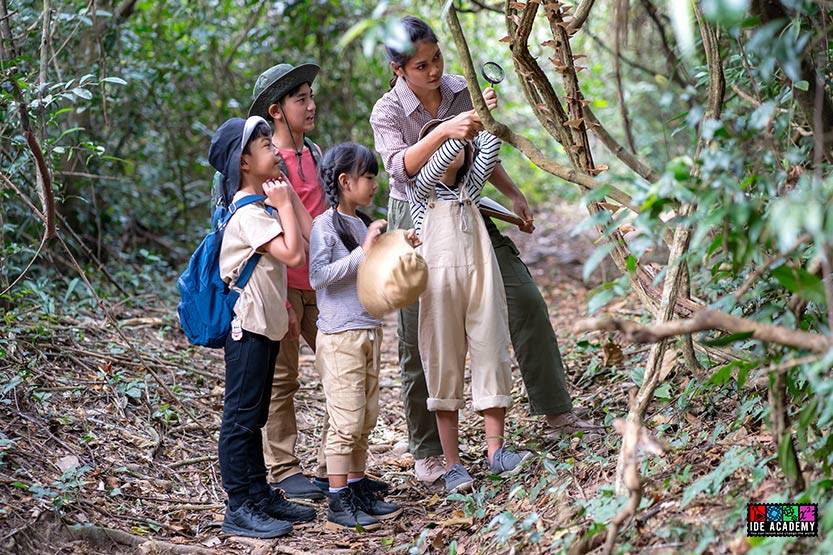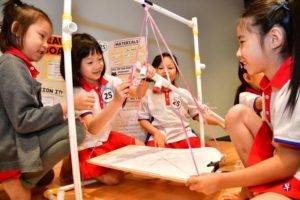Are you an aspiring teacher seeking to make learning STEM subjects fun for your students? Well, you have come to the right place! This article will share how you can engage your students and make STEM learning fun for them.
What does STEM look like in the classroom?
Before we get started, we believe it is crucial for educators to have an idea of what a STEM classroom should look like. This way, you can have a target in mind that you can work towards achieving. A STEM-focused learning environment should include:
- A collaborative environment where students are encouraged to work together to solve problems;
- Inquiry-driven lessons that spark students’ curiosity and their capacity to innovate;
- Less focus on direct instruction and more inquiry-based learning;
- A welcoming environment where students are encouraged to think outside the box and attempt multiple solutions to a problem.
Now that you have a clearer idea of how to approach your STEM lessons, it is time to work on getting your students on board with the curriculum. The best way to do that is to get them excited and involved in their STEM learning adventures. Here are some excellent ways to get started!
Tip #1: Get hands-on

We were all students once. We know that hearing a teacher drone on and on about scientific concepts can get boring. The practical lessons we had in the science lab conducting actual experiments were significantly more memorable. So as educators today, we understand how critical it is to incorporate hands-on activities in our classes.
In fact, this form of engagement is highly encouraged in all STEM programmes. When students participate in hands-on activities, they engage their different senses. This, in turn, activates multiple areas of their brain. The more regions they access, the better they are at retaining information.
Furthermore, when students are allowed to take control of their learning, they tend to display more enthusiasm. This greater agency also allows them to develop a deep passion for learning that lasts for a lifetime.
Tip #2: Encourage cooperation

Every student brings their unique ideas and perspective to the table. In a collaborative environment where everyone gets to share their views, their creativity expands. This enhances the learning experience and the quality of work that students produce. This is why collaborative sessions are frequently encouraged in any STEM programme.
Moreover, a core aspect of many STEM programmes is ideation. Participants are often encouraged to be creative and brainstorm possible solutions to different problems. But creative blocks do happen! When it happens, it can be challenging for students to progress, and they may end up losing their motivation to complete their tasks.
Having a partner or team to work with and bounce ideas off each other is a great solution to creative blocks. As students engage in discussion, their creativity flourishes and ideas will begin to flow. Furthermore, the sense of camaraderie and self-discovery developed during these collaborative sessions can create a more engaging classroom environment.
Tip #3: Incorporate technology

Technology can play a crucial role in the STEM learning process. Educators can leverage technology to create engaging content that sparks inquisitiveness in students and boosts their curiosity. This can be accomplished through the integration of technology into everyday classroom activities. In fact, this is something we emphasise in our professional development training programmes.
An example that is common in many STEM programmes is the use of robotic kits as part of the curriculum. This is because it excites children, encourages hands-on participation, and is a gateway to STEM subjects. Through robotics, students learn to collaborate with others and use their problem-solving skills to identify, analyze, and fix any potential problems with the robot.
With technology, educational resources can be made available 24/7 for students to access again and again, at any time they wish. This way, students get to learn at their own pace and revisit learning materials to better understand the lessons taught in class — with every resource available at their fingertips.
Tip #4: Organise a field trip

STEM programmes emphasise hands-on learning with real-world applications to help students develop a variety of skill sets. This involves identifying a real-world issue and applying their STEM knowledge to develop practical ways to resolve the problem. Sometimes, the best way to learn about a problem and gain a deeper understanding of it is to leave the confines of the classroom. Field trips can provide such an opportunity.
However, the location you choose for the field trip is crucial. The field trip should give students a first-hand experience of applying STEM concepts to the real world. The best way to do that is to organise a field trip that is relevant to what your students are exploring in class. If your students are working on elderly-friendly seats, a visit to an old folks home can help them better understand the needs of their target users.
A STEM programme is more than just teaching students facts and figures. It is about nurturing creativity and critical thinking, as well as their problem-solving skills. To achieve that in your lessons, you will need to think outside the box and discover ways to make learning STEM fun, accessible, and meaningful.
We hope the tips we have shared have provided you with some ideas on how you can get started. If you are searching for more ideas, you might want to consider signing up for IDE Academy’s professional development courses in Singapore. During the programme, educators learn how they can teach and engage students of diverse abilities with the localised STEMIE® curriculum. If you are interested, visit our website to learn more about our programmes.




